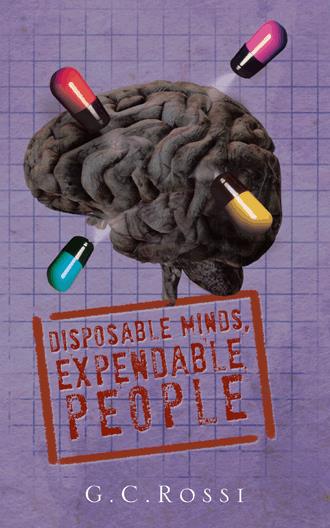The vision of life through the eyes of a ten-year-old in 1952 was very innocent. There was time for school, play, homework, family and friends. Television was not a regular home fixture and one’s imagination had to provide a fair amount of entertainment. Sitting by the radio listening to stories was exciting because our imagination provided the pictures. Dreams for a life in the future were still fairytale like, with little thought for responsibilities or of tragedies. That dream never included the notion that I would become a sixteen-and-a-half year old patient, diagnosed with “Infectious Hepatitis”, and admitted to one of the original wards at the Royal Victoria Hospital in Montreal. The public ward to which I was admitted looked like a page out of a Florence Nightingale book, with fifteen beds on either side of the room. Patients, young and old, suffered from maladies of constipation to cancer. It was a place to get cured or to die. Most of the doctors were caring and empathic, but the NATO doctor was cold and calculating, a scientist rather than a doctor. When he chose a patient at random, it was not for the patient’s benefit, but rather to further his personal research. To my misfortune, I fell victim to his sodium amytal -truth serum- experiment. I was finally discharged from this ward, extremely depressed, only to be admitted to the Allan Memorial Institute. The Institute was the psychiatric ward of the Royal Victoria Hospital where, due to lack of admitting beds, I became a day patient. Whatever treatment was required, was administered in the same manner, whether one was an “in” or an “out” patient. Most patients wandered about freely. There were no locked doors, but to qualify as a patient at the Allan, one had to experience various levels of assessment, from the interviews in the “Dungeon” in the basement, to the EEG lab “Chamber of Horrors” in the attic. Although drugs and EEG’s were a major and essential method of treatment to most patients, I was treated with nitrous oxide. All the patients were dysfunctional. Eventually my depression began diminishing, but I was re-admitted to the Royal Victoria with hepatitis. Thus began my ordeal over the next three-and-a half of my teen years which I spent being ill, and, in the name of science, was used and abused by the medical profession. Hepatitis was the key that kept me inside these doors. After two weeks at the Royal Victoria, I was back again at the Allan. A mental institution is like a dramatic stage play. Different doctors, different patients and different drugs, each playing a different variation on a theme. Patients did not have the right to choose whether or not to accept treatment and/or medication; they merely played a part that would fit into the agenda of that day. Sleep therapy was another approach used at the AMI. For an Argentinean doctor, clearing my mind could be achieved by having me in a sleeping state of vegetation for almost a month, allowing for a new cleansed brain to be ready for psychoanalysis. Sleep therapy patients were either being treated to body deprivation therapy, or were wired with earphones to continuously hear repeated recorded messages through them, a process called ‘psychic driving’. In comparison, my drug therapy treatment was simple. Saturated with drugs, and lack of all responsibilities, made us totally dependent on this environment. We were like actors performing in a play and when someone left, another patient soon filled the part. At this time, except for hypnosis, my treatment was basically a variety of drugs and psychoanalysis. By 1960 the RVH was already a modern, reputable, and renowned teaching facility, attracting students from all over the world. Medical students were able to learn techniques such as performing biopsies on live patients rather than on cadavers, as well as testing effects of new drugs on patients – all of which was “silently” practiced. How else could a doctor learn about the negative side effects of drugs on humans? This was still the era where “doctor knows best”, and few if any patients sued for medical malpractice. Ingesting large quantities of drugs still did not alleviate my problem. I was again admitted to the medical ward because of hepatitis. This time when injected with stelazine I had a dreadful side effect. I was told that an antidote was not available to me because it would ruin the experiment that a young intern was working on. Generally Dr. Cameron’s patients were subjected to ECT’s. This was frightening because he scrutinized treatments each doctor decided for individual patients, and could change treatments at his discretion. For some unknown reason I thankfully was spared this treatment. Something mysterious began happening. American guests of Dr. Cameron created an atmosphere of secrecy that hung like a heavy cloud over each one of us. We all felt vulnerable, and we didn’t know why. The ‘guests’ were CIA. Another doctor took over my psychoanalysis sessions from the departing Argentinean doctor. In order to qualify for funding for new experimental techniques of self-hypnosis, this required a certain number of patients. I helped fulfill her need. At this time the occupational art therapist introduced me to the famous artist Arthur Lismer. He was involved with Art Teacher training at the School of Art and Design. While still within the system of the AMI, I enrolled for a Teaching Art Class. In May 1962 I voluntarily submitted to a final EEG. This would complete the doctor’s experiment and was to confirm that autogenic-therapy, or self-hypnosis, was a successful technique. That was my final appointment at the AMI. I walked away. I was liberated. Finally, after three and a half years of emotional and physical confinement, I was free from the Allan and also from all the drugs. I would now be able to concentrate on an exciting event, my upcoming marriage in June that would change my life for the better.


